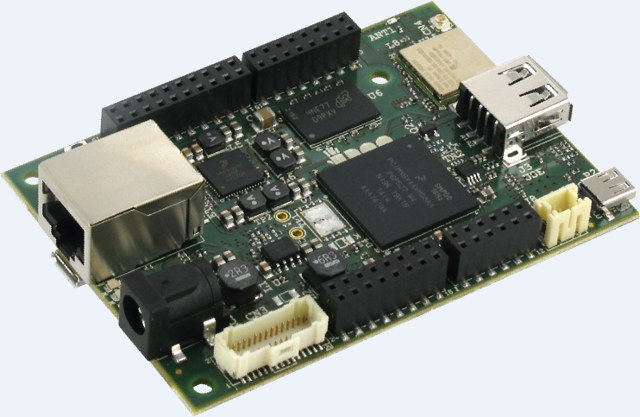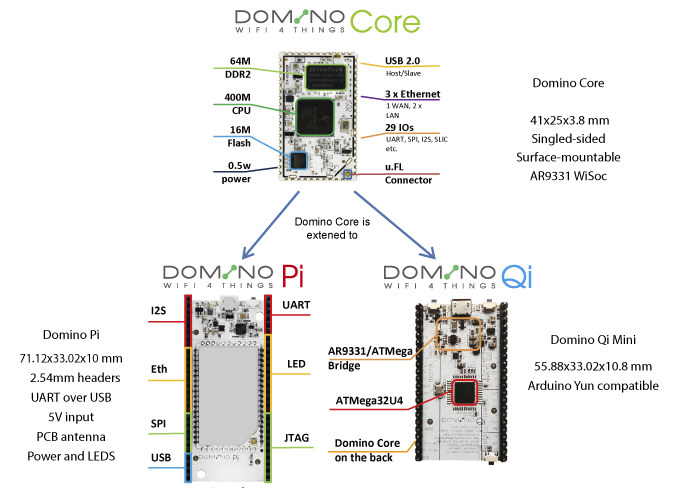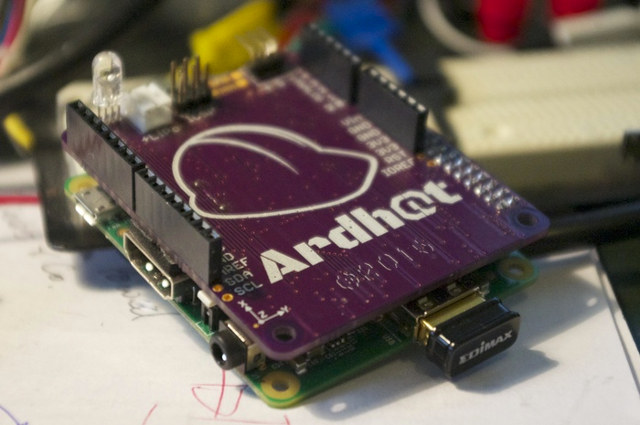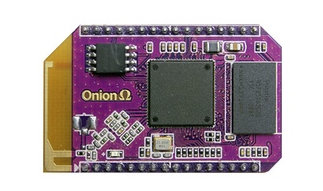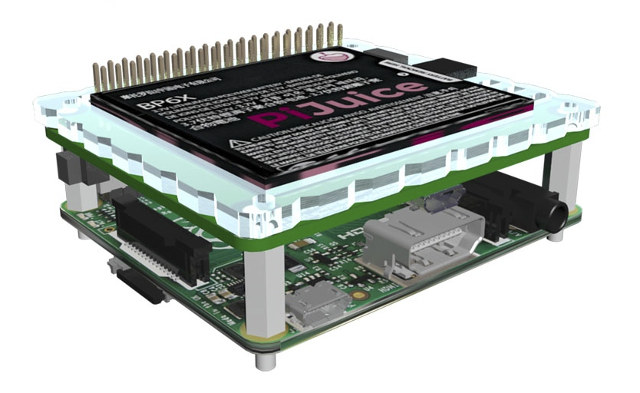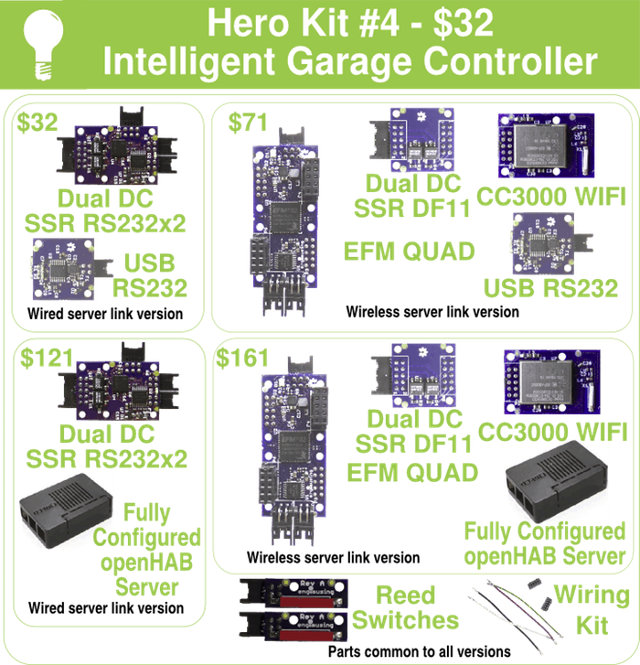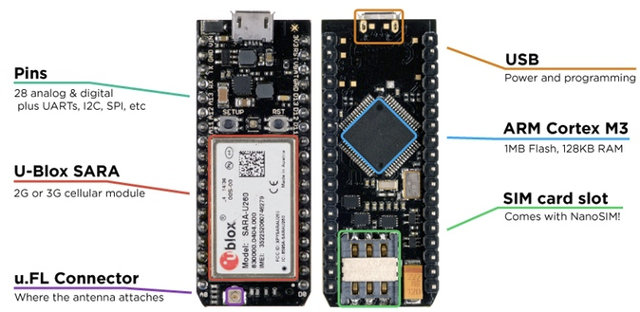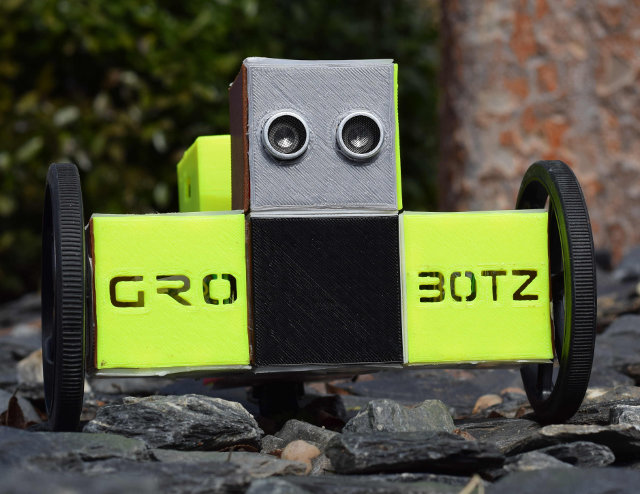UDOO Neo was unveiled last February as the first hobbyist board features Freecale i.MX6 Solox Cortex A9 + Cortex M4 processor. I was expecting UDOO to design support board since their earlier UDOO board combined Freescale i.MX6 processor with an Atmel MCU, and the new processor allowed for integrating the same functionality into a single chip. The board is now on Kickstarter where you can pick UDOO Neo Basic for $49 (Early bird is $35), or UDOO Neo for $59 (Early bird was $45) adding an Ethernet port, some sensors, and 1GB RAM, instead of 512 MB for the Basic version. But both versions of the board basically share the same specifications: SoC – Freescale i.MX 6SoloX ARM Cortex-A9 core @ 1GHz with 2D/3D GPU and ARM Cortex-M4 Core @ 166 MHz System Memory – 512MB (Basic) or 1GB DDR3 Storage – micro SD slot, 8-bit SDIO interface (on expansion headers) […]
Domino Core Wi-Fi Module Powers an Arduino Yun Compatible Board (Crowdfunding)
The makers of GL.iNet OpenWRT compatible router have decided to build a module and two development boards based on Qualcomm Atheros AR9331 WiSoC. Domino.IO is composed of a Domino Core Wi-Fi module that can be used in your own project, but if also part of Domino Pi, a breadboard-friendly board featuring the module, and Domino Qi mini, a similar board with an Atmel ATMEga32U MCU making it compatible with Arduino Yun board. Domino Core specifications: SoC – Qualcomm Atheros AR9331 MIPS processor @ 400MHz with System Memory – 64MB DDR3 Storage – 16MB flash Connectivity – 802.11 b/g/n Wi-Fi with u.FL connector I/Os via half through holes – USB 2.0 host/slave, 3x Ethernet, 29 IOs including UART, SPI, I2S, SLIC, etc… Dimensions – 41 x 25 x 3.8 mm Domino Pi and Qi mini summarized specifications are shown in the table below. Domino Pi Domino Qi Mini Wi-Fi Module Domino […]
ARDHAT adds Arduino Shield Compatibility, an ISM Band Radio to Raspberry Pi and ODROID-C1 Boards (Crowdfunding)
NinjaBlocks created Pi Crust add-ons board adding a 433MHz radio and Arduino compatibility to the Raspberry Pi Model A & B a few years ago, but the product has since been removed from their store. But a startup called ubIQio has now created a similar product compatible with Raspberry Pi Model A+, B+ and B2, as well as ODROID-C1 which also comes with a 40-pin R-Pi header. The ARDHAT board is a HAT compatible add-on board with an Atmel MCU, Arduino headers, as well as an optional long range mesh ISM radio (433, 868 and 915 MHz) and various sensors. There are four versions of the board: Basic Ardhat, Ardhat-I, and Ardhat-W and Ultra, which share the following specifications: MCU – Atmel MCU @ 16MHz Headers and I/Os Arduino compatible header accepting 5V Arduino shields 12 ch PWM O/P, 6 ch analog I/P Real-time Clock Programmable Power/Navigation combo switch Programmable […]
Onion Omega is an Atheros AR9331 Wi-Fi Module Supporting Various Docks and Add-on Boards (Crowdfunding)
There are so many inexpensive Wi-Fi modules running Linux that it would be easy to discard Onion Omega as yet another Wi-Fi module based on Atheros AR9331 WiSoC. However, the developers have tried to bring some added value by making programming easier for web developers, integrating it with a cloud platform (free for non-commercial use), and providing basicor Arduino dock, and add-on boards for Ethernet, OLED, Relay… to make building hardware projects easier too. Let’s go through the hardware first, starting with the module specifications: SoC – Atheros AR9331 400MHZ MIPS 24K System Memory – 64MB DDR2 400MHz Storage – 16MB Flash Connectivity – 10/100 Mbps Ethernet + 802.11b/g/n Wi-Fi up to 150Mbps with PCB antenna w/ uFL connector I/Os – 18 GPIOs USB – 1x USB 2.0 Power Supply – 3.3V; Typ. consumption: 0.6W Dimensions – 28.2mm x 52mm (1.1″ x 2.0″) Since this type of module is not […]
PiJuice Battery HAT Module for the Raspberry Pi Boards Comes with an Optional Solar Panel (Crowdfunding)
The Raspberry Pi is a low power board that can be powered a few hours or a few days with batteries, and the easiest solution is probably to use a USB power bank connected to the micro USB port of the board, but the solution is not really integrated. That’s where PiJuice comes into play. It’s a HAT compatible module that connects nicely to the latest Raspberry Pi boards with 40-pin header (A+, B+ and B2), and include a 1,400 mAh battery that can be used as UPS (Uninterrupted Power Supply), an RTC, and more. Key features of PiJuice HAT: 1400 mAh Lipo battery, good enough to last up to 24 hrs in constant use. 5,000 mAh batteries are also said to be supported. Full UPS (Uninterrupted Power Supply) solution Integrated RTC (Real Time Clock) On board intelligent on/off switch Low power deep-sleep state with wake on interrupt/calendar event On […]
Engimusing DIY Home Automation Modules Are Managed with openHAB installed on ODROID-C1 Board (Crowdfunding)
Engimusing has launched a crowdfunding campaign on Kickstarter for their home automation solutions comprised of tiny modules (20x20mm) based on Silicon Labs Gecko EFM32 MCUs, some sensor modules and a server based on ODROID-C1 board and enclosure pre-installed and configured with openHAB open source home automation software. There are not that many technical details about the EFM32 modules, but they come into two variants: standalone & DF11-10 I/O, the latter allowing you to vertically stack multiple modules. This video shows how DF11-10 IO connectors work. The modules are said to be programmable with the Arduino IDE. The openHAB server is a standard ODROID-C1 board (Amlogic S805, 1GB RAM) with 4GB flash (eMMC or micro SD), and a black enclosure. If you value your money more than your time, and/or already have another computer or board (Raspberry Pi, BeagleBone Black…) that runs Linux, you could also install and configure openHAB by […]
Spark Electron Cellular Module for M2M Projects Comes with a $3 Monthly Data Plan (Crowdfunding)
Spark IO started with Spark Core, a tiny Wi-Fi module, followed with Spark Photon is a cheaper, faster, and tinier Wi-Fi module, and now the company is launching Spark Electron to bring cellular connectivity to hobbyist projects at an affordable cost and small form factor. Spark Electron specifications: MCU – ST Micro STM32F205 ARM Cortex M3 microcontroller @ 120 MHz with 1MB Flash, 128K RAM Cellular Connectivity – U-Blox SARA U-series (3G) or G-series (2G) modem + NanoSIM card slot + u.FL connector for Antenna Headers – 36 pins with 28 GPIOs (D0-D13, A0-A13), plus TX/RX, 2 GNDs, VIN, VBAT, WKP, 3V3, RST USB – micro USB port for power and programming Misc – Setup and reset buttons, LED Dimensions – 5.08 cm x 2.03 cm x 0.76 cm (1.27 cm including headers) The board can be programmed with Wiring (Arduino’s programming language), C/C++, or ARM assembly. It’s longer than Spark […]
GroBotz Interactive Robot Project is Made of Easy to Assemble Smart Blocks (Crowdfunding)
GroBotz makes me think of Lego applied to robotics. The project consists of modules such as motors, sensors, buttons, switches, or cameras that snap together in order to create a robot on wheels, games, toys, a musical instrument, or whatever idea you may have, and the hardware is then programmed using a graphical user interface. A Raspberry Pi board is used for the brain of the robot, and Microchip PIC MCUs for the smart blocks. The software is programmed in C# using Xamarin, the user interface is based on Unity, OpenCV is used for image processing, and during development a plastic part where printed with Makerbot, and schematics and PCB layout designed with CadSoft EAGLE. The company has now come up with a number of modules as shown in the picture below. Your robot can then be controlled over Wi-Fi with GroBotz app which works on Windows, Mac OS, iOs, […]


